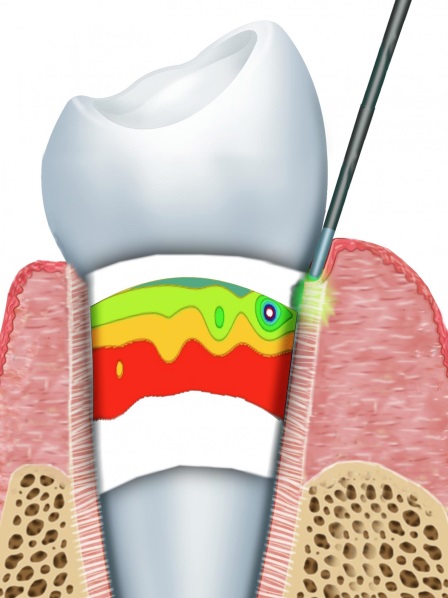Periodontal disease is a kind of chronic oral disease caused by a bacterial infection. If it is not treated well for a long time, it will affect the life of the teeth. Scaling and root planning are two of the most common traditional treatments which is complicated and takes long time to recover. Also most patients experience some degree of bleeding during the standard dental procedure, and this allows bacteria from your mouth to enter your bloodstream, and thus the rest of your body. Oral bacteria have been linked to heart disease, and low birth weight in newborn babies. These treatments are traditionally completed using metal tools that can cause significant irritation and damage to soft tissue. Now laser treatment makes these procedures completely painless, reduces risk for infection, and promotes complete, comfortable healing.
Laser treatment for periodontal disease is very simple and quick. Because of the bactericidal effect, laser treatment reduces the amount of bacteria that would normally get into your bloodstream during a cleaning. When treating patients with periodontal disease, a laser fiber tip will be introduced into the pocket and provide a bactericidal and detoxifying effect. During the treatment, there will be little bleeding or discomfort. Studies have shown that there is a remarkable reduction in the bacterium with the introduction of the laser compared to that accomplished with deep scaling and root planning alone. When set to short pulses and moderate energy levels, the laser can kill bacteria buried 3 mm deep in the soft tissue of the gums with minimal heating of the surrounding tissue.

Many researches show that dental diode laser periodontal treatment to be an effective procedure with significant bacteria reduction and faster tissue recovery. It is also a minimally invasive procedure. Patients are demanding less surgery and the diode laser provides the general dentist with an excellent means of keeping periodontal treatment such as Periodontic germ reduction, Peri-implantitis and periodontal Pocket in the general practice